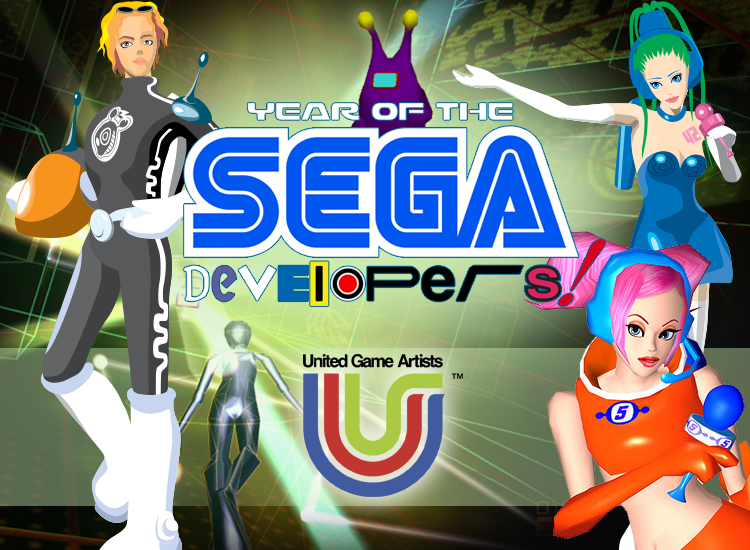
This month we are proud to celebrate the unique and musical driven games of United Game Artists (ユナイテッド・ゲーム・アーティスツ). The team was made up of members of SEGA AM6 and headed by Sega AM3’s Tetsuya Mizuguchi. Unfortunately, the team was short lived and only released three titles under the ‘United Game Artists’ banner. Regardless, those three games have made such an impact on us gamers that we are still talking about them over a decade later.
AM6 was a video game research and development division within SEGA. They were strange team compared to other SEGA in-house studios because they structured into smaller teams with their own names. There was Team Aqulia, makers of the Victory Goal games, Team Andromeda (which we also celebrated a month of), which made the Panzer Dragoon series, and G9 Team, which produced Pro Yakyuu Greatest Nine ’97. SEGA AM6 named most of their teams (with the exception of G9) after space constellations. This was to keep up with SEGA’s theme of codenaming their home consoles after planets. SEGA AM6 would be broken up after SEGA’s 2000 restructure, splitting the members over various teams including Smilebit and United Game Artists.

While they are most widely known as United Game Artists (UGA), the team wasn’t originally going to be called that. Before the team started development of their first title, Space Channel 5, they were known as Sega AM R&D #9. The Japanese release of Space Channel 5 actually has their Sega AM R&D #9 brand logo. For the international version, SEGA published it with their new (and better) team name that we all know and love.
The team was headed by Tetsuya Mizuguchi, who got his fame when he produced the arcade mega-hit Sega Rally Championship with AM3, which would later be ported to various consoles including the Sega Saturn. United Game Artist wasn’t the first team Tetsuya Mizuguchi would help run. Shortly after his success at AM3 he split off with fellow Sega Rally Championship team members to form AM Annex, which created Sega Touring Car Championship and Sega Rally 2. That team was also short lived and got merged into Sega AM8 in 1998, where they helped develop Star Wars Trilogy Arcade.
While United Game Artists only released three games, all of them have become cult hits well known throughout the video game industry.
 Space Channel 5, 1999:
Space Channel 5, 1999:
United Game Artists’ first game would be the cosmic adventure known as Space Channel 5 (スペースチャンネル5), a game that follows Space Channel 5 reporter Ulala as she is tasked to up the ratings of the channel and stop evil Morolians from forcing the galaxy to dance.
The idea for Space Channel 5 came along when SEGA asked Mizuguchi to create a title that would appeal to “casual female gamers,” but Mizuguchi aimed to make the game a bit more competitive in design to also appeal to male gamers. In its early phases Space Channel 5 was simply an interactive music video where pressing the buttons on time would change the video and not much else would happen. Mizuguchi was displeased with the lack of fun in the game and demanded that elements inspired by the dance troupe Stomp be implemented. This is ultimately where gameplay elements like ‘strike a pose’ originated.
The game is also noted for having a appearance by Michael Jackson, who goes by “Space Michael.” Michael Jackson was shown the game when it was a little over half way complete and asked if he could be in it. Space Channel 5 would later inspire SEGA games like Hatsune Miku Project Diva.
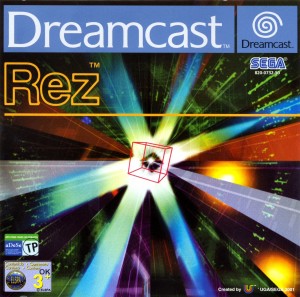 Rez, 2001:
Rez, 2001:
United Game Artists decided to follow up on Space Channel 5 with one of Mizuguchi’s passion projects, the rail-shooter Rez (レズ). While the game was conceptualized and produced by Tetsuya Mizuguchi, he had the help of former members of Team Andromeda to help him build the project.
Much like Space Channel 5, Rez was influenced by music; mainly electronic music. While the game was a rail shooter in nature, it was really a music game underneath it all. The player would be able to lock-on targets and shoot them which resulted in sounds and melodies that would immerse the player into the game.
The game’s story was set in a futuristic computer network called K-project where the flow of data is controlled by an AI named Eden. Eden, overwhelmed by the knowledge gathered via the network, starts to doubt its own existence and enters a shut down sequence. You play as a hacker logging into the K-project to reboot Eden while destroying viruses and firewalls. The game had a wide range of influences including Russian painter Wassily Kandinsky.
The game got some media coverage due to its ‘Trance Vibrator’ which was a Playstation 2 attachment that would pulse in time with the music. The idea behind it was that it would immerse you into the game and allow you to feel the vibe. When intereviewed by 1up about the device Tetsuya Mizuguchi said, “This is very dangerous! The vibrator can be put in any place,” as he winked. Screw Attack ranked the Trance Vibrator as the best video game peripheral.
Rez was released simultaneously on both Dreamcast and Playstation 2 in Japan and Europe. In North America, only the Playstation 2 version got a release.
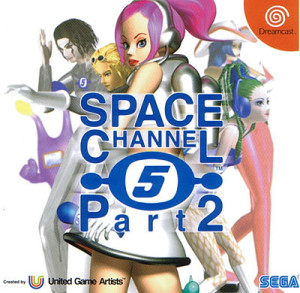 Space Channel 5 Part 2, 2002:
Space Channel 5 Part 2, 2002:
For their third and final game United Game Artists decided to try their hand at Space Channel 5 again, releasing Space Channel 5: Part 2. United Game Artists didn’t change the core gameplay much and kept what everyone loved about Space Channel 5 intact, while giving the game much more content than its predecessor. Since the game is a lot bigger, most fans consider it to be superior to the original. The story had Ulala fighting against Rhythm Rogues this time around.
The game had all the characters return (including Space Michael) and also added additional characters like Noize, President Peace and Purge. Charge moves, which involved holding down a button, were added. There was also a new mode called Ulala’s Dancing Show where a player would have to play 100 consecutive lines with only one heart. The game introduced a 2 player mode where one player controls the direction inputs and the other controls the actions. An alternative story mode was also introduced where the character’s outfits were changed and the game was harder. The backgrounds in this game where also real time instead of rendered like the first game.
Life after United Game Artists
United Game Artists was merged into Sonic Team in 2003, after only releasing three unique titles. United Game Artists weren’t the only team to be reorganized, the following year lead to several changes throughout SEGA’s development teams. Due to changes at SEGA, Mizuguchi and other members of UGA left the company and formed their own team: Q Entertainment.
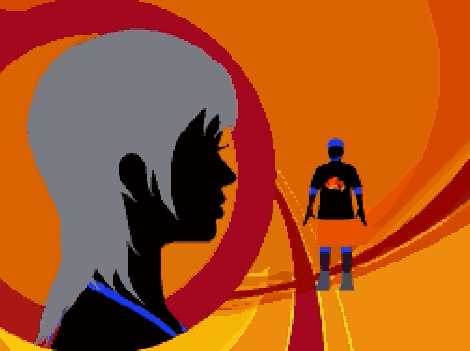 Even though many of the main people form United Game Artists left SEGA, you could still get a sense of their presence from within Sonic Team with titles like Feel The Magic: XY/XX and The Rub Rabbits! which were developed by ex-members of UGA along with Sonic Team. The team also worked on the Sonic Riders trilogy, including Sonic Free Riders on the Xbox 360 Kinect. The first Sonic Riders game even featured Ulala as a playable racer.
Even though many of the main people form United Game Artists left SEGA, you could still get a sense of their presence from within Sonic Team with titles like Feel The Magic: XY/XX and The Rub Rabbits! which were developed by ex-members of UGA along with Sonic Team. The team also worked on the Sonic Riders trilogy, including Sonic Free Riders on the Xbox 360 Kinect. The first Sonic Riders game even featured Ulala as a playable racer.
At the same time Tetsuya Mizuguchi was hard at work developing games over at Q Entertainment. The team debuted with the highly successful puzzle game on the PSP called Lumines, followed by Meteos on Nintendo DS and later Every Extend Extra on PSP. The team would go on to create sequels and ports to these games including Lumines II, Every Extend Extra Extreme, Meteos Wars, and much more. In 2008 Q Entertainment teamed up with Microsoft Studios and SEGA to make an HD port of Rez on XBLA.
 Tetsuya Mizuguchi and Q Entertainment would announce in 2010 that they were developing the spiritual successor to Rez, Child of Eden. The title would be published by Ubisoft on the Playstation 3 and Xbox 360, utilizing both the Playstation Move and the Xbox Kinect. Like many other Q Entertainment games, the game gained wide critical acclaim when it was released. In 2012 after the completion of Child of Eden, it was discovered that Mizuguchi stepped down from games production for the time and in 2014 he would officially leave the company he help co-found over a decade prior. But he wouldn’t be out of gaming for long as he announced in 2015 that he was working on a mobile title with Japanese developer Mobcast, a puzzle game called 18.
Tetsuya Mizuguchi and Q Entertainment would announce in 2010 that they were developing the spiritual successor to Rez, Child of Eden. The title would be published by Ubisoft on the Playstation 3 and Xbox 360, utilizing both the Playstation Move and the Xbox Kinect. Like many other Q Entertainment games, the game gained wide critical acclaim when it was released. In 2012 after the completion of Child of Eden, it was discovered that Mizuguchi stepped down from games production for the time and in 2014 he would officially leave the company he help co-found over a decade prior. But he wouldn’t be out of gaming for long as he announced in 2015 that he was working on a mobile title with Japanese developer Mobcast, a puzzle game called 18.
Even though United Game Artists had a lifespan of less than four years and only three titles to their name, the general uniqueness and quality of those titles has earned the team a cult following. We are proud to be celebrating the games of UGA all month long here at SEGAbits. Thanks for reading our retrospective of this incredibly innovative development team, and as Ulala would say: “Stay tuned!”
Ad:
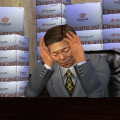

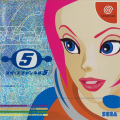
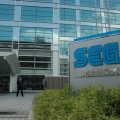
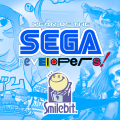
I honestly never knew they only made three games. The team always seemed so ubiquitous that they had to of created more games.
Hands down my favourite in-house SEGA developer. Great article.
Was very good to read this SEGA’s game artists. Thanks for posting this article.
Cheers
Me encanta los juegos se SEGA, cuando no estoy trabajando en pintura me gusta dedicarle un tiempo a los juegos. Gracias por el artículo.